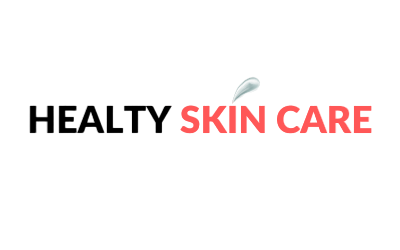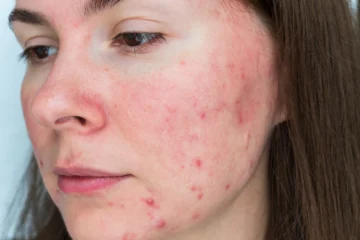Introduction to the Link Between Diet and Acne
Ever wondered why, despite using the best skincare products, acne still persists? The answer might lie within your kitchen. Recent studies have shown a significant link between diet and acne, underscoring the importance of what you eat in achieving clear, healthy skin.
Acne is a common skin condition that can be triggered by various factors such as hormones, stress, and genetics. However, the role of diet in skin health is often overlooked. Consuming certain foods can either exacerbate or alleviate acne, making nutrition a crucial component of any skincare regimen. In this comprehensive guide, we’ll explore the best and worst foods for acne, providing you with actionable tips to transform your skin from the inside out.
The Best Foods for Clear Skin
Antioxidant-Rich Fruits and Vegetables
Fruits and vegetables loaded with antioxidants are your skin’s best friends. These nutrients help fight off free radicals, which can damage skin cells and lead to inflammation. Some top picks include:
- Blueberries: Rich in vitamins A and C, as well as antioxidants, blueberries help reduce inflammation and promote skin healing.
- Spinach and other leafy greens are packed with iron, folate, chlorophyll, and vitamins E, A, and C, all of which contribute to radiant skin.
- Carrots contain beta-carotene, which converts to vitamin A—an essential nutrient for skin repair and maintenance.
Scientific studies support the benefits of these foods. For instance, a study published in the “Journal of Clinical and Aesthetic Dermatology” found that people who consumed more fruits and vegetables had fewer acne breakouts.
Omega-3 Fatty Acids
Omega-3 fatty acids, found in fish like salmon and mackerel, as well as flaxseeds and walnuts, have anti-inflammatory properties that can help reduce acne. These healthy fats also keep your skin hydrated and supple.
Incorporating omega-3s into your diet can be as simple as adding a handful of walnuts to your salad or enjoying a serving of grilled salmon for dinner. According to research published in the “American Journal of Clinical Nutrition,” a diet rich in omega-3s can significantly improve acne severity.
Probiotics
Probiotics, found in fermented foods like yogurt, kefir, and sauerkraut, help balance the gut microbiome. A healthy gut can reduce inflammation and improve overall skin health.
Adding a serving of yogurt to your breakfast or enjoying a side of kimchi with your meals can make a noticeable difference. A study in the “Journal of Microbiology and Biotechnology” found that participants who consumed probiotics experienced fewer acne lesions.
Green Tea
Rich in antioxidants called catechins, green tea is known for its anti-inflammatory and antibacterial properties. Drinking green tea regularly can help reduce the severity of acne and promote clearer skin.
You can enjoy a cup of green tea daily or use it as a base for smoothies. The “Journal of Investigative Dermatology” reports that green tea extract can reduce sebum production, a common cause of acne.
The Worst Foods for Acne
High Glycemic Index Foods
Foods with a high glycemic index (GI) can spike blood sugar levels, leading to increased insulin production. This, in turn, can trigger hormonal fluctuations and increased oil production, both of which contribute to acne. High-GI foods include:
- White Bread and other refined grains can cause rapid spikes in blood sugar.
- Sugary Snacks like candies and pastries are often high in sugar and can exacerbate acne.
- Soft Drinks are loaded with sugars and can lead to breakouts.
A study published in the “American Journal of Clinical Nutrition” found that individuals who followed a low-GI diet experienced a significant reduction in acne lesions.
Dairy Products
Milk and other dairy products can increase insulin levels and contain hormones that may trigger acne. Some studies suggest that skim milk is more likely to cause breakouts than whole milk.
Consider alternatives like almond milk or oat milk. The “Journal of the Academy of Nutrition and Dietetics” states that people who reduced their dairy intake saw improvements in their acne.
Fast Food and Fried Foods
Fast food and fried foods are often high in unhealthy fats and sugars, which can lead to inflammation and clogged pores. Items to avoid include:
- French Fries and other fried foods can increase oil production and inflammation.
- Burgers and processed meats often contain additives that may worsen acne.
- Pizza is typically high in both sugars and unhealthy fats.
Research published in the “Journal of Clinical and Experimental Dermatology Research” found a correlation between fast food consumption and increased acne severity.
Chocolate
While not all chocolate is bad, some studies suggest that milk chocolate can exacerbate acne due to its sugar and dairy content. Dark chocolate, on the other hand, is less likely to cause breakouts.
If you crave chocolate, opt for dark chocolate with at least 70% cocoa. The “Journal of the American Academy of Dermatology” suggests that the type of chocolate and its ingredients play a role in its impact on acne.
Expert Tips on Creating an Acne-Safe Diet
Consult a Dermatologist
Before making any significant dietary changes, consult a dermatologist. They can provide personalized advice based on your skin type and condition.
Dermatologists often recommend keeping a food diary to identify potential triggers. Documenting what you eat and your skin’s reaction can help pinpoint foods that may be causing breakouts.
Incorporate Balanced Meals
A balanced diet rich in fruits, vegetables, lean proteins, and healthy fats is essential for clear skin. Ensuring that each meal includes a variety of nutrients can help maintain skin health.
Nutritionists suggest aiming for a colorful plate at each meal. Different colors often indicate a range of nutrients, which can collectively benefit your skin.
Stay Hydrated
Drinking plenty of water helps flush out toxins and keep your skin hydrated. Aim for at least eight glasses of water a day.
Adding lemon or cucumber slices to your water can make it more enjoyable to drink. Proper hydration supports overall skin health and can help reduce the frequency of breakouts.
Real-Life Success Stories
Jane’s Journey to Clear Skin
Jane struggled with severe acne for years. After consulting a dermatologist, she decided to cut out dairy and high-GI foods from her diet. Within a few months, she noticed a significant improvement in her skin.
Jane’s story highlights the importance of personalized dietary changes. By identifying and eliminating her specific triggers, she was able to achieve clearer skin.
Tom’s Transformation
Tom, a fitness enthusiast, realized that his post-workout whey protein shakes were causing breakouts. He switched to a plant-based protein powder and saw a dramatic reduction in his acne.
Tom’s experience shows that even seemingly healthy foods can be acne triggers. Being mindful of ingredients and experimenting with alternatives can lead to better skin health.
Maria’s Mindful Eating
Maria, a busy professional, often relied on fast food for quick meals. After learning about the link between diet and acne, she started meal-prepping healthier options. Her skin cleared up, and she felt more energized.
Meal prepping allowed Maria to make healthier choices and avoid acne-triggering foods. Planning ahead can simplify the process of maintaining an acne-safe diet.
Conclusion and Call to Action
In summary, the foods you eat play a crucial role in skin health. Incorporating antioxidant-rich fruits and vegetables, omega-3 fatty acids, probiotics, and green tea into your diet can help achieve clear skin. On the other hand, high-GI foods, dairy products, fast food, and milk chocolate can exacerbate acne.
Making informed dietary choices can lead to significant improvements in your skin condition. Start by consulting a dermatologist, maintaining balanced meals, and staying hydrated. Real-life success stories show that personalized dietary changes can lead to clearer skin.
Ready to transform your skin through diet? Share this post with your friends and start your journey to clear skin today!





